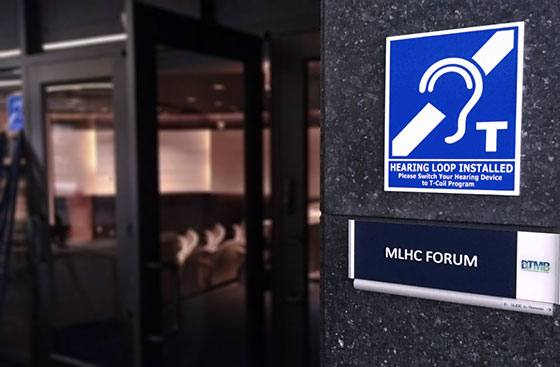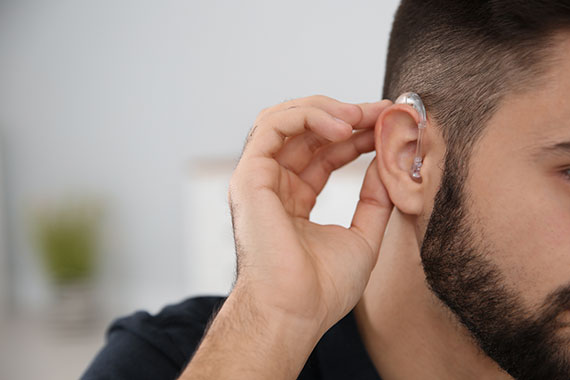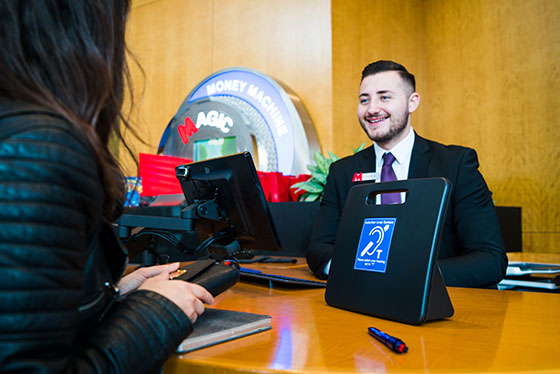How to Use Hearing Loops
Hearing loss impacts one-fifth of the population and a third of over-sixty five-year-olds.
A user’s guide to hearing loops
Wherever you see a square blue ‘ear’ sign with a ‘T’, it means that the venue has a hearing loop.
You’ll find them in lots of public places – in shops, banks and theatres, on public transport, in places of worship, lecture halls, community centres and at reception desks.

What is a hearing loop?
As its name suggests, a hearing loop is a loop of wire that transmits sound via a magnetic field.
The sound source is picked up by a microphone and sent into an amplifier. The loop acts like an aerial, sending the magnetic signal from the amplifier to your hearing aid.
A hearing loop means you’ll be able to hear just the sound source, clearly and crisply, without disturbing background noise.
Get in the ‘T’ position
Hearing aids need to be switched to the ‘T’ setting in order to convert the magnetic signal from the loop back into sound.
The ‘T’ stands for ‘telecoil’. Most hearing aids have one but not all. Talk to your audiologist to find out whether your hearing aid has a telecoil and ask them how to use the setting.
IMPORTANT – Check with your audiologist to ensure they have activated the T-setting programme in your hearing aid.

Find the blue ear to hear
Hearing loops are generally installed so that you can’t see them. Once installed, they normally stay on permanently. The blue ear sign lets you know that a venue has assistive listening services available. It’s a sign that’s recognised and used globally. If the sign has a ‘T’ next to the ear it indicates that a hearing loop is installed.
A shop or supermarket with a number of checkouts might not have a loop system at every till point so check which ones carry the sign.
Hearing loops in large venues like a railway station concourse or a theatre might not cover the entire area. Look for the blue sign to show where to get the best listening experience.
Some retailers and services will have a portable loop – a pharmacy, for example, may have one they can use in their consultation room.

What to do if it doesn’t work
Ask if the loop is turned on. If it’s a portable loop, it may need charging. Make sure your hearing aid is switched to the ‘T’ setting and that you’re standing in the right place. Try moving position to see if the signal gets stronger.
Don’t hesitate to ask for what you need, to help you access a service or a venue. The venue will welcome you letting them know if the loop isn’t working or working well.
It may be that the ‘T’ button on your hearing aid isn’t working. Check with your audiologist.
